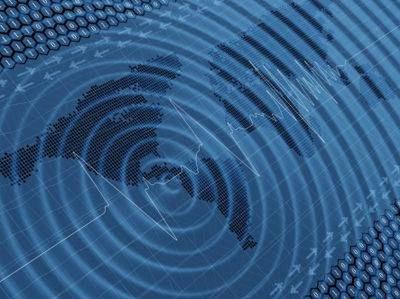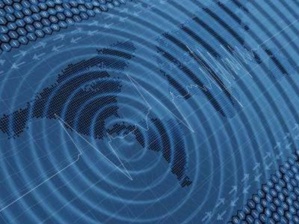On the early morning of Saturday, the 14th November 2015, Japan witnessed a “powerful” earthquake which measures “7.0-magnitude” in the Richtes scale which hit the “southwestern coast of Japan” reported the department of US Geological Survey, while many authorities of Japan reported “several small tsunamis on at least two islands”.
According to USGS the earthquake had a shallow type epicentre located “160 kilometres” or “100 miles” away from the “town of Makurazaki” which is situated in the south-western part of Japan. However, in its initial stages, no “major damages” were reported.
Moreover, several islands also observed tsunamis which measured about one metre wave height, reported the “public broadcaster NHK”. In fact, many local authorities were cited urging the people living in the “low lying areas to move away to higher ground for safety”.
As per the authorities, the possibilities of larger tsunamis were looming in the horizon; therefore the people were advised to remain cautious for “more than an hour after the earthquake”. The earthquake had struck at “5:51am”, while the Pacific Tsunami Warning Centre had earlier informed that that this quake didn’t come with any “tsunami threat”.
The geological position of Japan makes it an ideal place for earthquakes to occur very frequently, as the islands of Japan are located “at the juncture of several tectonic plates”. Consequently, Japan becomes a victim of several “relatively violent quakes every year”.
However, Japan practices certain “building codes” as protective measures to the frequent quakes, while “regular disaster drills” are conducted to “ensure” that the “frequency and magnitude” of the quakes usually do not claim any lives or cause “significant damage to property in Japan”.
While, the livemint.com reports:
“A massive undersea quake that hit in March 2011 sent a tsunami barrelling into Japan’s northeast coast.
“As well as killing thousands of people and destroying communities, the waves also swamped the cooling systems at the Fukushima nuclear plant, sending three reactors into meltdown.
“The nuclear disaster, the world’s worst since Chernobyl, displaced tens of thousands of people and rendered tracts of land uninhabitable, possibly for decades”.
References:
http://www.livemint.com/
According to USGS the earthquake had a shallow type epicentre located “160 kilometres” or “100 miles” away from the “town of Makurazaki” which is situated in the south-western part of Japan. However, in its initial stages, no “major damages” were reported.
Moreover, several islands also observed tsunamis which measured about one metre wave height, reported the “public broadcaster NHK”. In fact, many local authorities were cited urging the people living in the “low lying areas to move away to higher ground for safety”.
As per the authorities, the possibilities of larger tsunamis were looming in the horizon; therefore the people were advised to remain cautious for “more than an hour after the earthquake”. The earthquake had struck at “5:51am”, while the Pacific Tsunami Warning Centre had earlier informed that that this quake didn’t come with any “tsunami threat”.
The geological position of Japan makes it an ideal place for earthquakes to occur very frequently, as the islands of Japan are located “at the juncture of several tectonic plates”. Consequently, Japan becomes a victim of several “relatively violent quakes every year”.
However, Japan practices certain “building codes” as protective measures to the frequent quakes, while “regular disaster drills” are conducted to “ensure” that the “frequency and magnitude” of the quakes usually do not claim any lives or cause “significant damage to property in Japan”.
While, the livemint.com reports:
“A massive undersea quake that hit in March 2011 sent a tsunami barrelling into Japan’s northeast coast.
“As well as killing thousands of people and destroying communities, the waves also swamped the cooling systems at the Fukushima nuclear plant, sending three reactors into meltdown.
“The nuclear disaster, the world’s worst since Chernobyl, displaced tens of thousands of people and rendered tracts of land uninhabitable, possibly for decades”.
References:
http://www.livemint.com/






